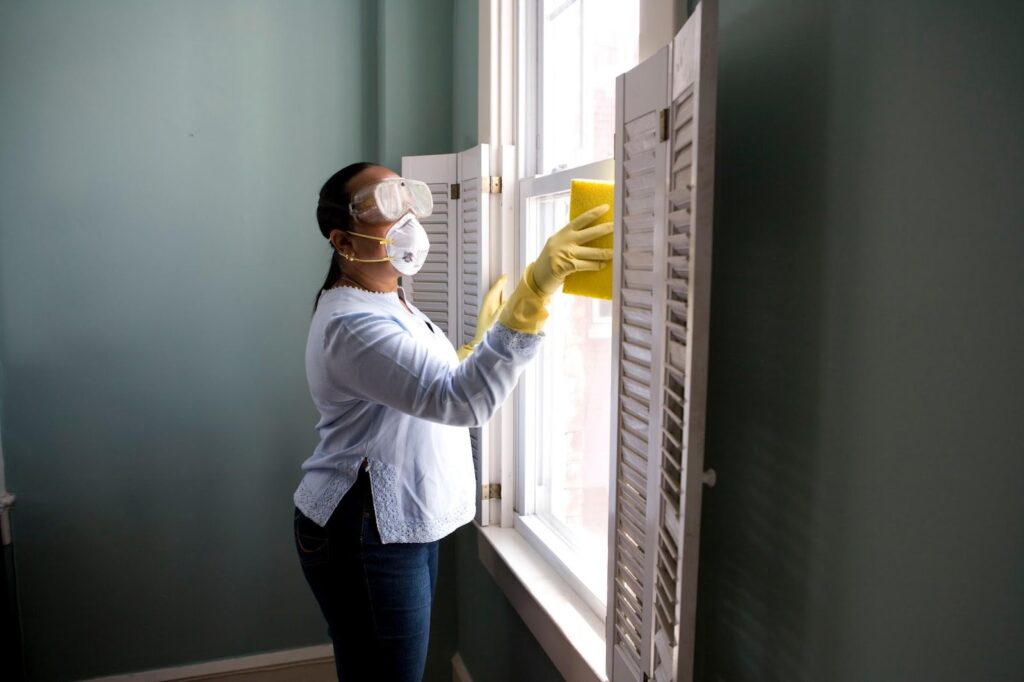No products in the cart.
How to Safely Remove Pests and Wild Animals from Your Home: A Guide
Do you hear strange noises coming from inside your walls, smell animal droppings in the attic, or have seen a wild animal scurrying around your house? If so, chances are you may have a pest or wild animal lurking in and around your home.
Although it is common to experience certain types of critters taking up residence in our homes during different times of the year, having them there can pose a risk to both you and your family’s health and safety.
Let’s explore how to safely remove pests and wild animals from your home while protecting yourself and minimizing further damage.
Identify the Type of Pest or Wild Animal in Your Home
If you suspect a pest or wild animal is lurking in your home, you must identify it as soon as possible. be it skunks, raccoons, or squirrels — these animals all cause damage to your property and pose a potential threat to your safety. To get rid of skunks, for example, you must hire a specific removal service that can safely remove them from your property. Alternatively, if you are dealing with rodents, such as mice or rats, you can set up traps to capture them and release them back into the wild.
If you don’t know how to identify the type of pest or wild animal in your home, you can look for specific signs such as droppings, chewed wires, torn insulation, damaged drywall, or holes in walls. You can also try setting up a camera to catch the animal in action and get a better idea of what you are dealing with.
Take Necessary Precautions
Before embarking on your pest control mission, take necessary precautions to safeguard your health and prevent unnecessary risks. Always maintain a safe distance from wild animals or pests as they may be carriers of disease or can be aggressive when threatened.
Wearing protective clothing like gloves and long-sleeved shirts can avoid scratches or bites. It’s also advisable to cover your nose and mouth when dealing with pest droppings to prevent the inhalation of harmful bacteria or spores.
If you plan on using any pesticide or chemical repellent, be sure to follow the instructions meticulously and keep them out of reach of children and pets. In some cases, it may be best to hire a professional exterminator to handle the situation safely and effectively.
Use Humane Methods
It’s inevitable to have pests and animals come searching for shelter in your home, particularly during seasonal transitions. However, you must handle their removal without causing harm or pain. Whenever possible, use humane methods such as live traps for larger animals and release them back into the wild.
If you are dealing with smaller pests like insects, consider using natural remedies or eco-friendly products instead of harsh chemicals that can negatively impact the environment. Even be mindful of any potential nesting areas while removing animals from your home, to avoid separating a mother from her young.
Seal Off Entry Points
Once you have successfully removed the pests and wild animals from your home, prevent them from returning. Inspect your home for any potential entry points such as cracks in the foundation or gaps in windows or doors. Fix these areas promptly and consider using wire mesh to cover larger openings like vents and chimneys.
Don’t forget to keep your home clean and clutter-free to avoid attracting pests and wild animals looking for food or shelter. Regularly remove potential sources of food, such as garbage and pet food, from outside your home to discourage any unwanted guests.
Keep Food Sealed and Stored Away
It can be tempting to leave bags of food out on the counter or pantry shelves for convenient snacking but this habit can quickly attract unwanted guests. Pests and animals are always on the lookout for easy sources of food, and leaving your snacks exposed is like rolling out a welcome mat.
The best way to keep these unwelcome visitors at bay is to store your food in sealed containers and keep them away from any potential entry points. That means no leaving snacks out on the counter or store in open bags on the pantry shelves. Thanks to these simple steps, you can protect your food from contamination and keep your home free from pests and other animals.
Consider Adding Preventative Measures
If you live in an area with frequent pest or wild animal activity, it may be worth considering adding preventative measures to your home. This could include installing motion-activated lights or sprinkler systems to deter animals from entering your property.
You can also plant natural deterrents such as mint, lavender, and marigolds around the perimeter of your home to keep away certain pests. And for those pesky insects, consider adding screens to your doors and windows or using citronella candles to keep them at bay. When you take preventative measures, you can decrease the likelihood of pests and wild animals taking up residence in your home and avoid future infestations.
Maintaining a pest-free and wildlife-free home is a proactive, continuous process. By adopting the practices outlined in this guide, you can protect your living space from unwanted guests, safeguard your health, and prevent damage to your property.
Cohabitation with pests and wildlife is not inevitable, and the key to prevention lies in consistent efforts and humane practices. Stay vigilant, be observant, and when in doubt, don’t hesitate to call professional pest control services.






